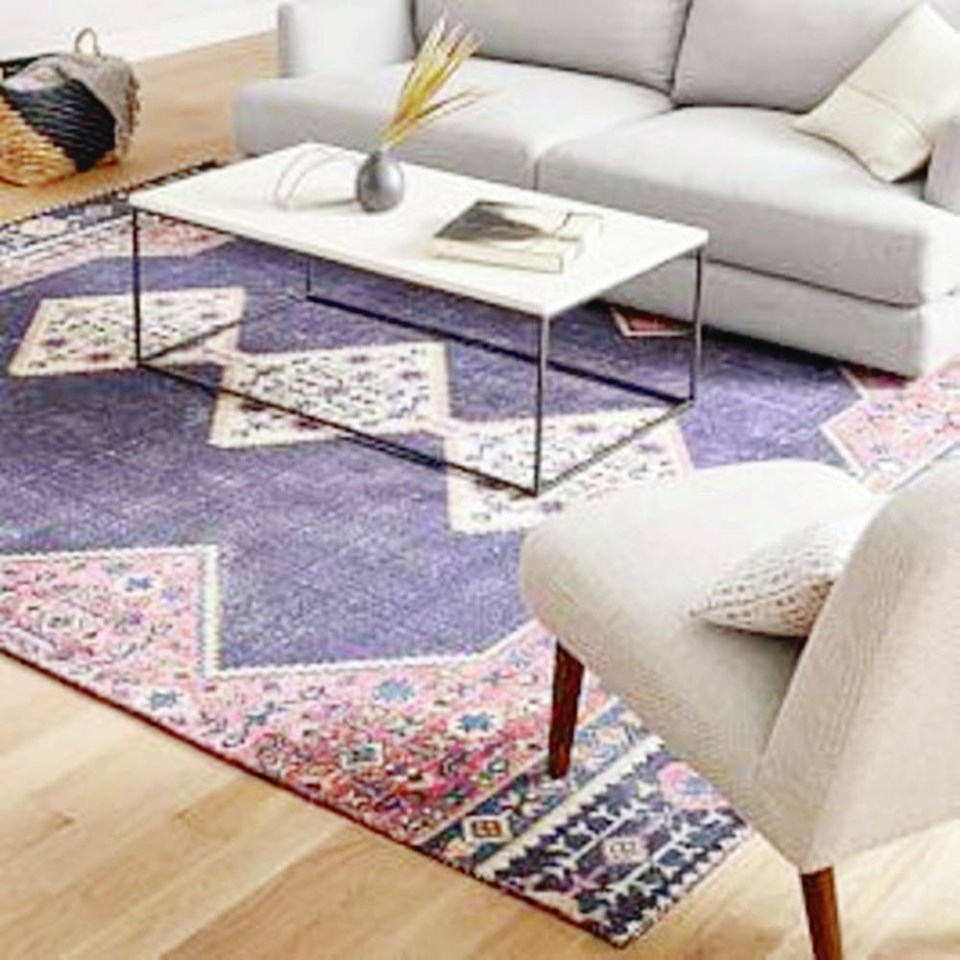Dear Debbie: We have just installed beautiful oak hardwood throughout our main floor, including the kitchen and hallway.
Now we are in the market for an area rug for the living room and wonder about size. Are there rules that we should follow?
Jennie
An area rug is a special feature. Consider it as art on the floor.
Whether it’s a time-honoured pattern or a modern graphic print, its presence brings energy and interest to a room.
Consider what mood you’d like to capture. If you already have your furniture, that will have some bearing on your choice.
If there is patterned upholstery on the sofa and chairs, then a neutral carpet, either plain or one with a minimal or monotone pattern, is a good choice to balance and complement your setting.
The rug should also harmonize with the tones of the oak floor. Size is an important factor; if the rug is too small for the room, it will look forlorn.
Rules differ depending on the room’s size and if you have an open floor plan. The rug should anchor the seating arrangement, which means that at least the front feet of the sofa and chairs are resting on it.
Along with the size of your rug, there is more to consider. Pile height and style are an important part of your decision.
A low-pile rug is conducive to a space that gets lots of traffic. There are many choices at differing price ranges, from dhurries and orientals to popular sisal, and natural and synthetic weaves.
Tightly woven short fibers are durable and vacuum easily. High pile carpets feel soft and inviting underfoot, a good selection for a den or bedroom where a cozier feeling is welcome.
Dear Debbie: My friends tell me I am an eclectic decorator, which is their way of describing my very mixed-up styles.
I love patterns and bold colours and don’t pay attention to what matches.
I do like a cohesive look, so perhaps I could use some advice on when too much is too much.
Maxine
You will know if you have included too many different patterns in a room because you’ll notice that you aren’t particularly comfortable amid all that busyness. As much as you love colour, your eyes need some place to rest.
Ask your friends if your décor makes them uncomfortable. It would be interesting to hear what they have to say … perhaps they admire your style but don’t know how to emulate the look.
Bold colours stand out best alongside a complementary neutral. The same pattern can be repeated in different sizes two or three times. It helps to have a dominant followed by smaller versions.
Patterns can be repeated on different elements. Carry your design using a different scale from carpet to lamp base or cushions.
A large motif on draperies gets distorted when they are open and closed; a medium or small print is best.
Place large-scale motifs on a wall or carpet. For those who are timid about mixing patterns into their décor, start with a story board. Place upholstery fabric and wallpaper swatches together that have a common element but otherwise vary.
Play with paint colours, and pictures of lamps and other furnishings. There is lots of opportunity to produce a captivating assembly with a pastel base.
Written by Debbie Travis and Barbara Dingle. Please email decorating questions to house2home@debbietravis.com. Follow Debbie at instagram.com/debbie_travis, facebook.com/thedebbietravis, debbietravis.com.



